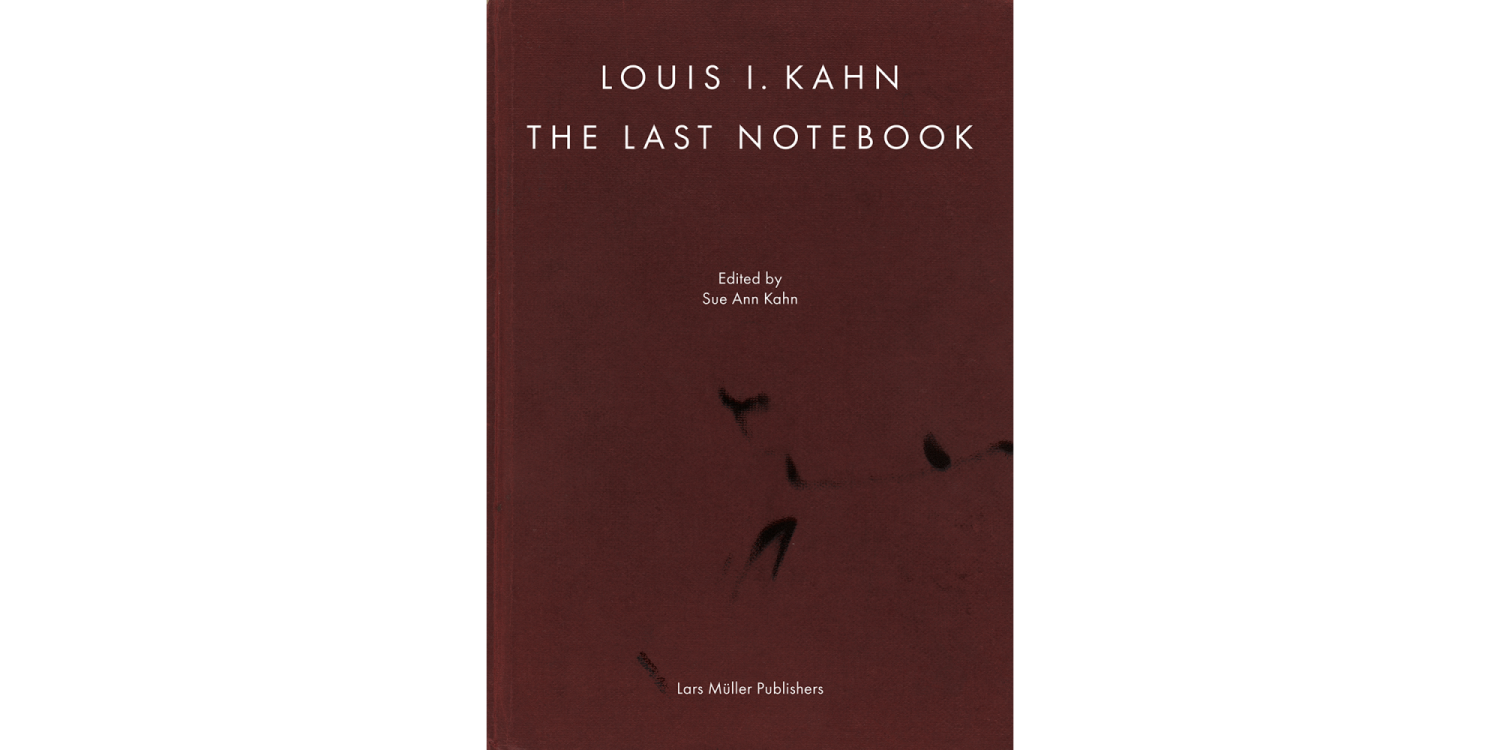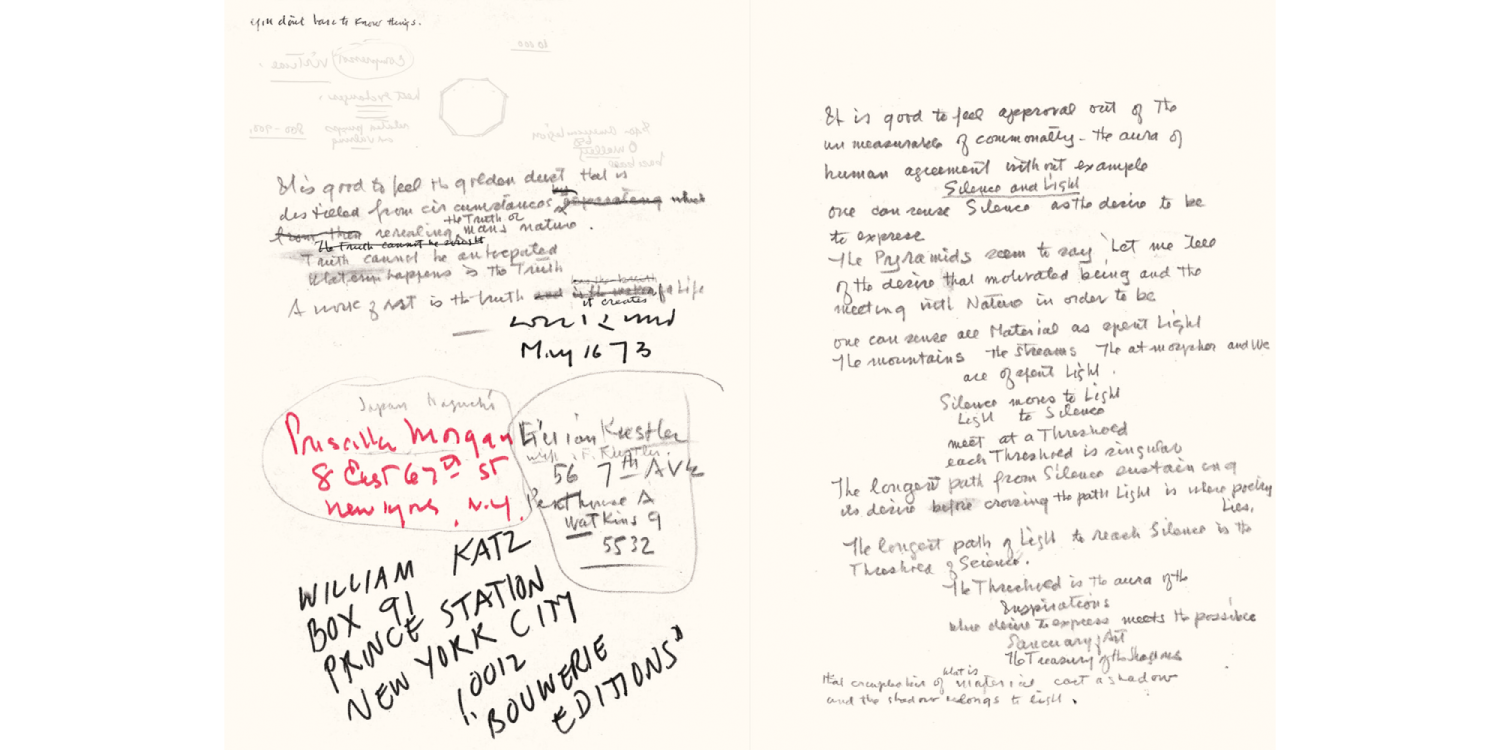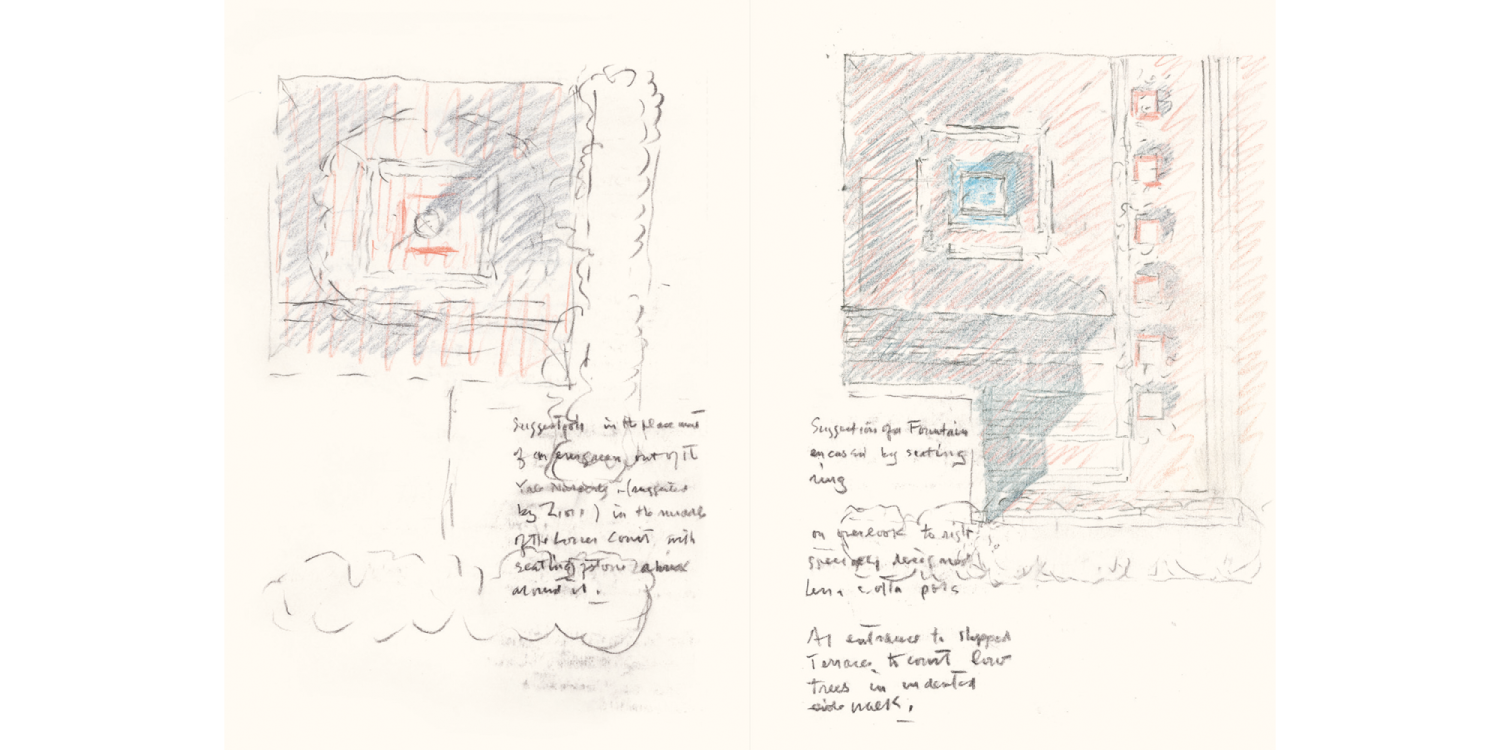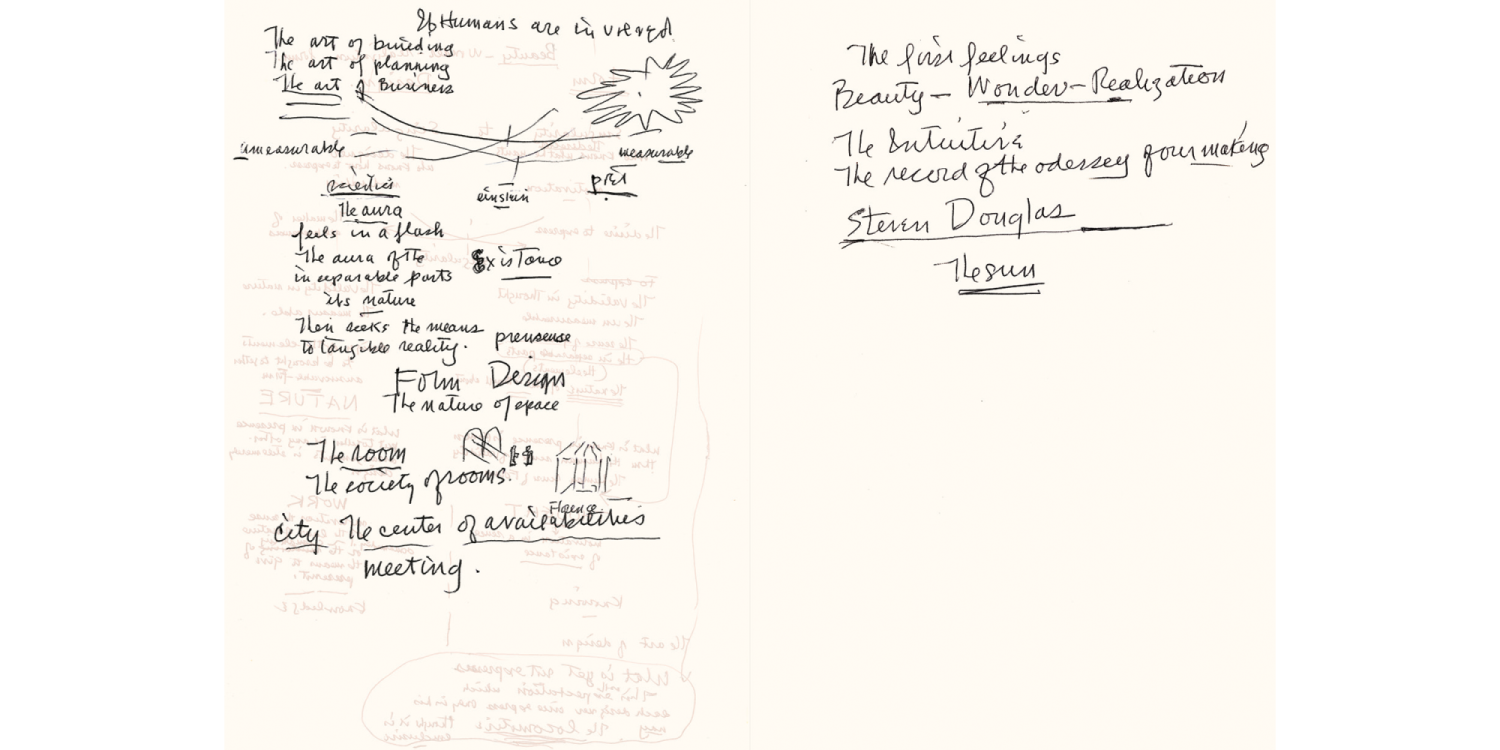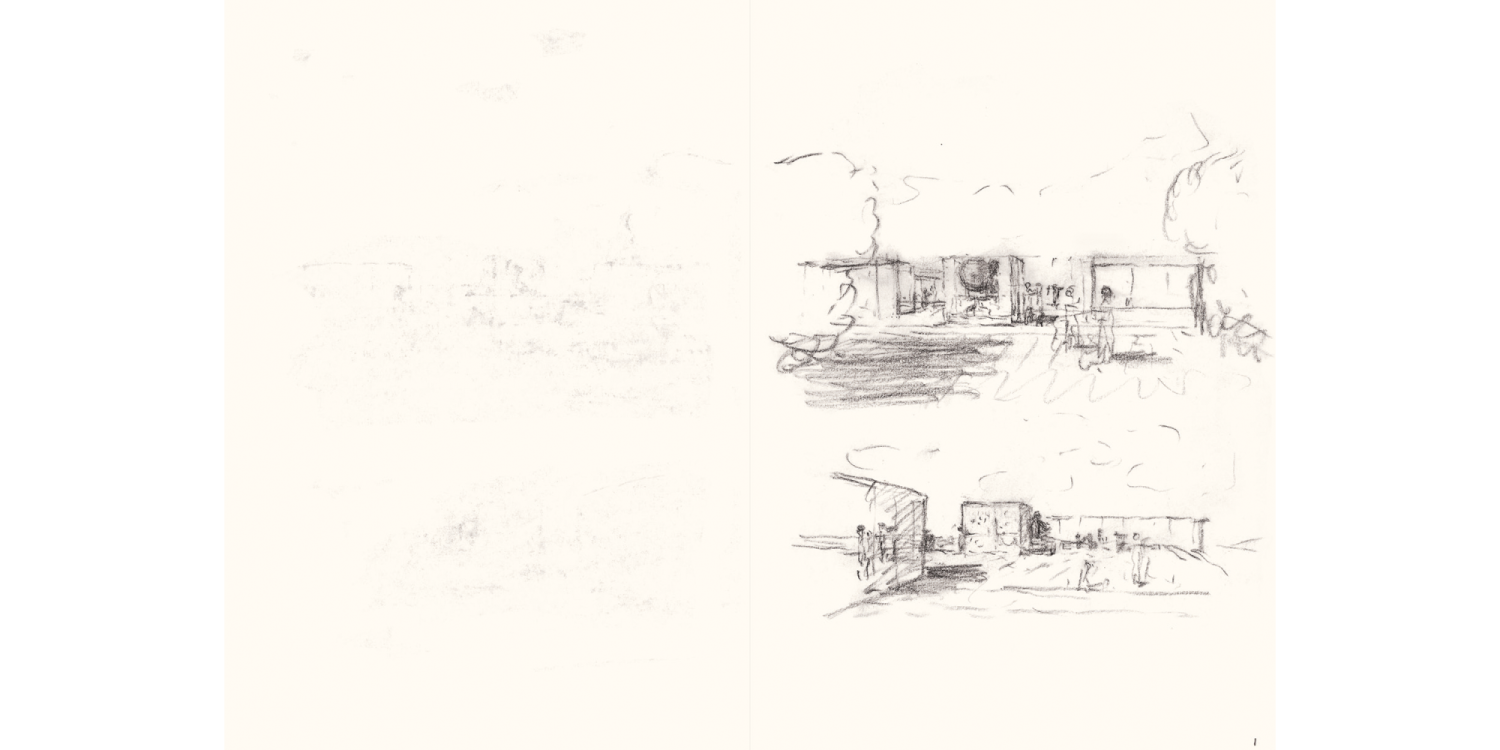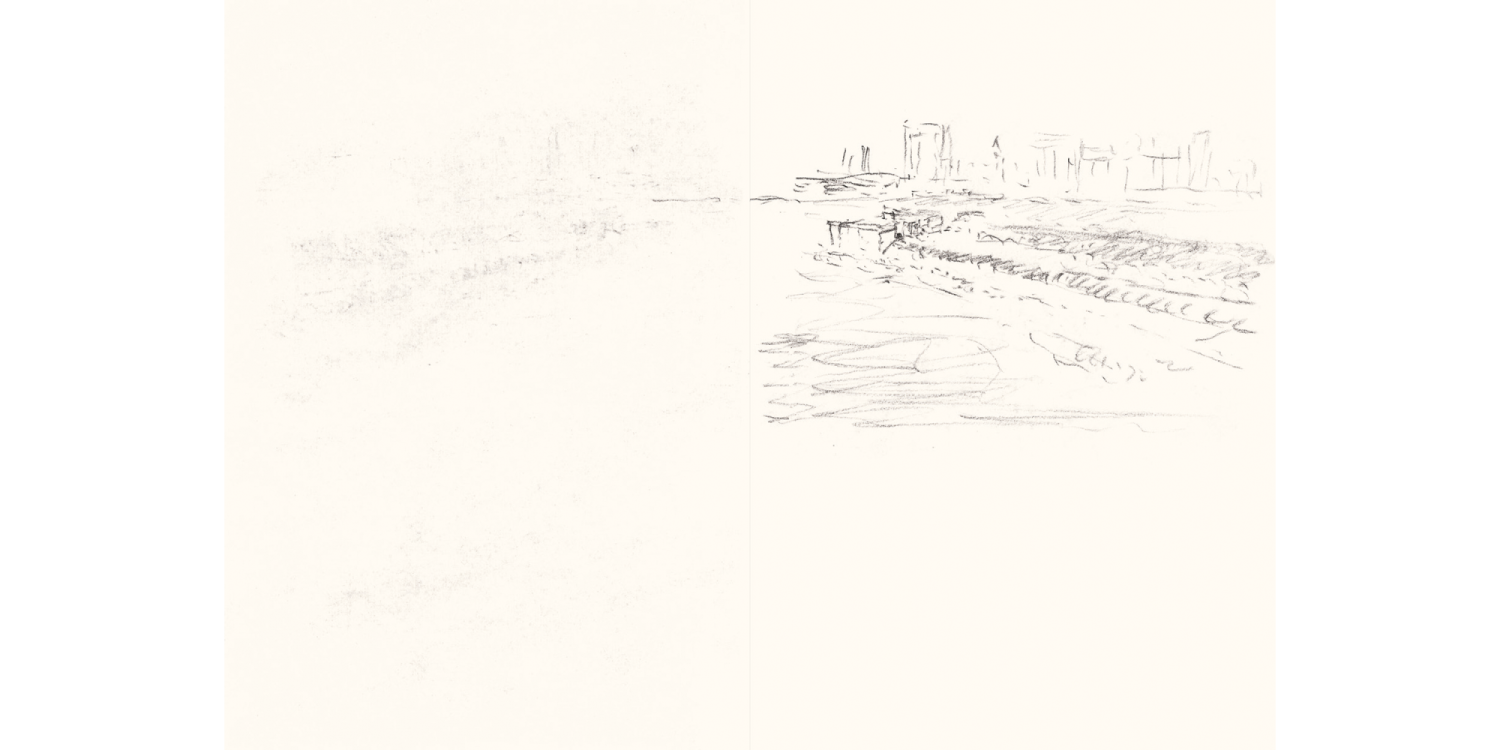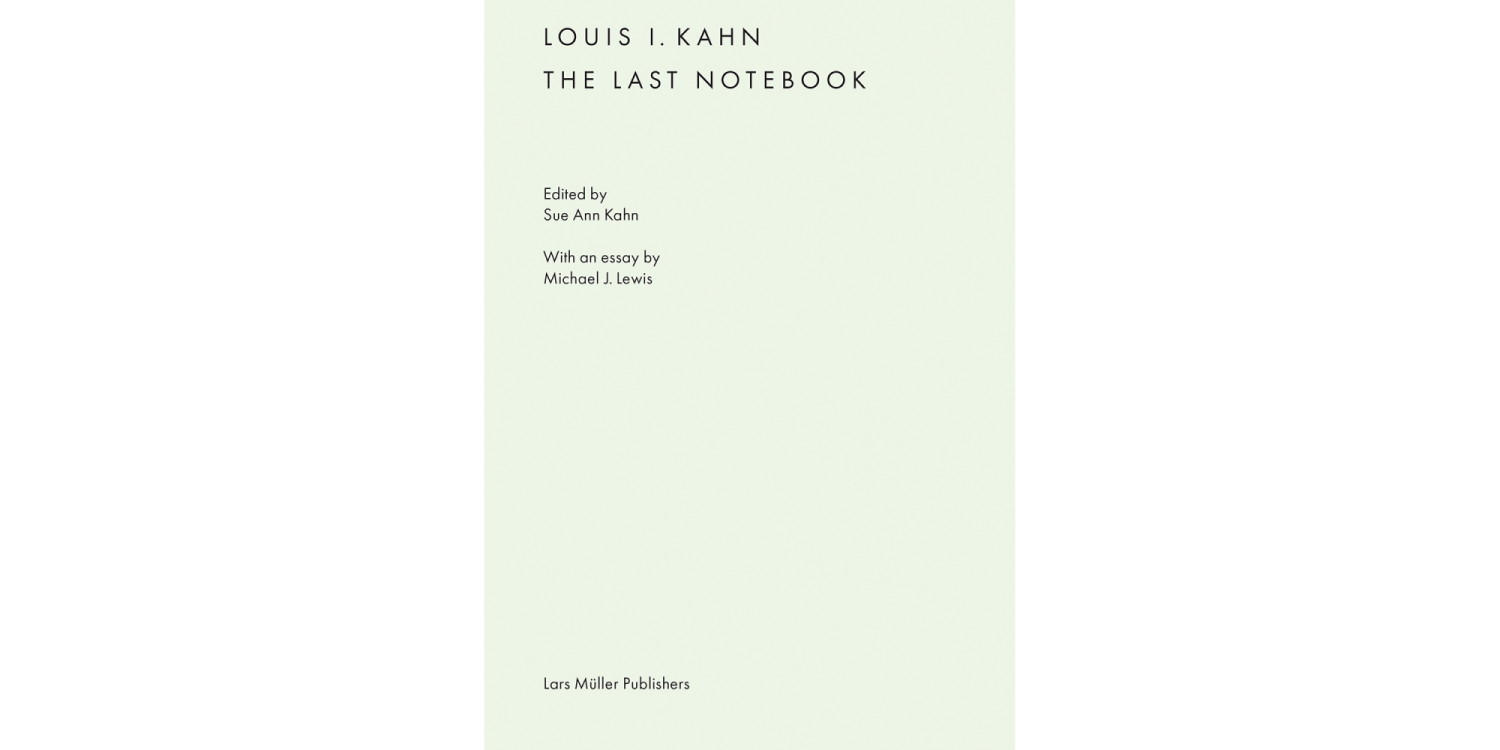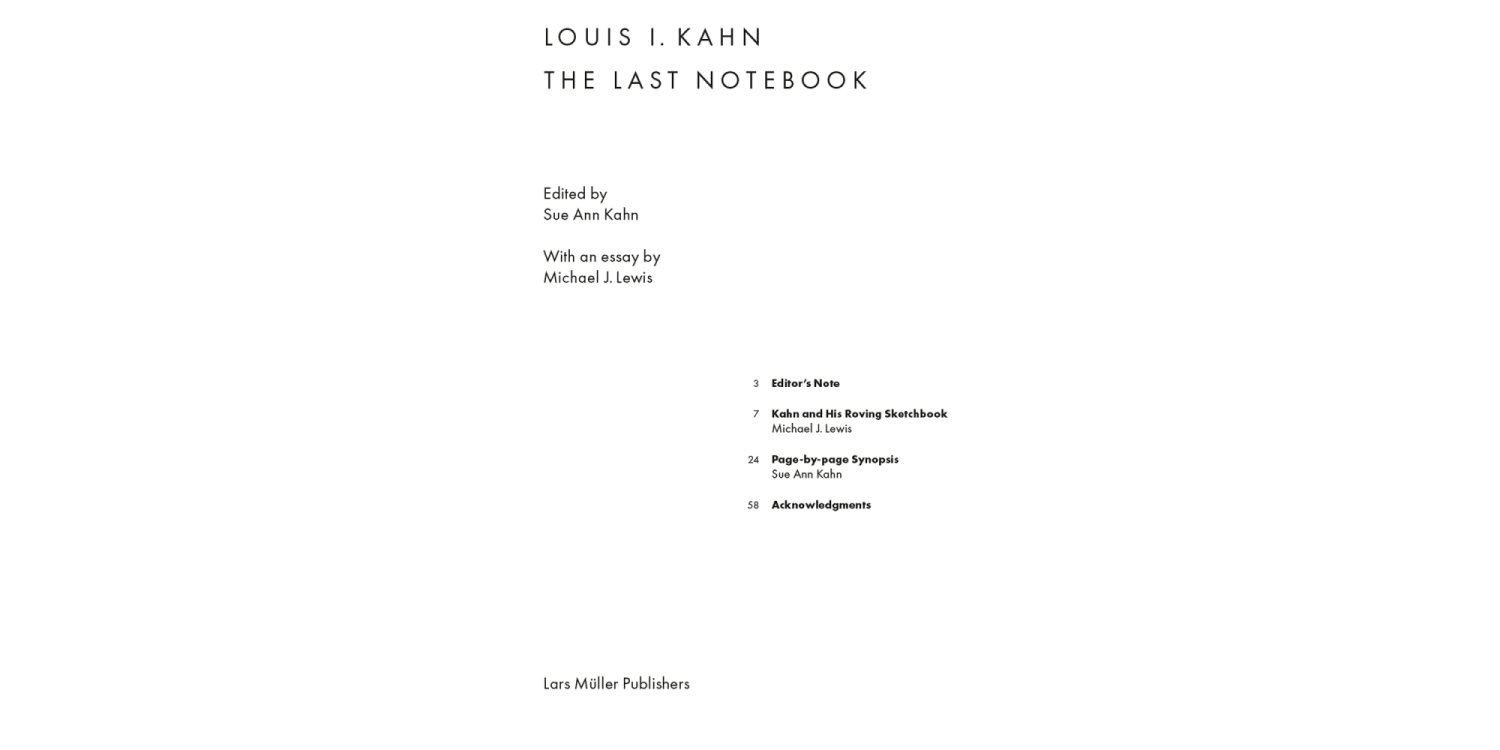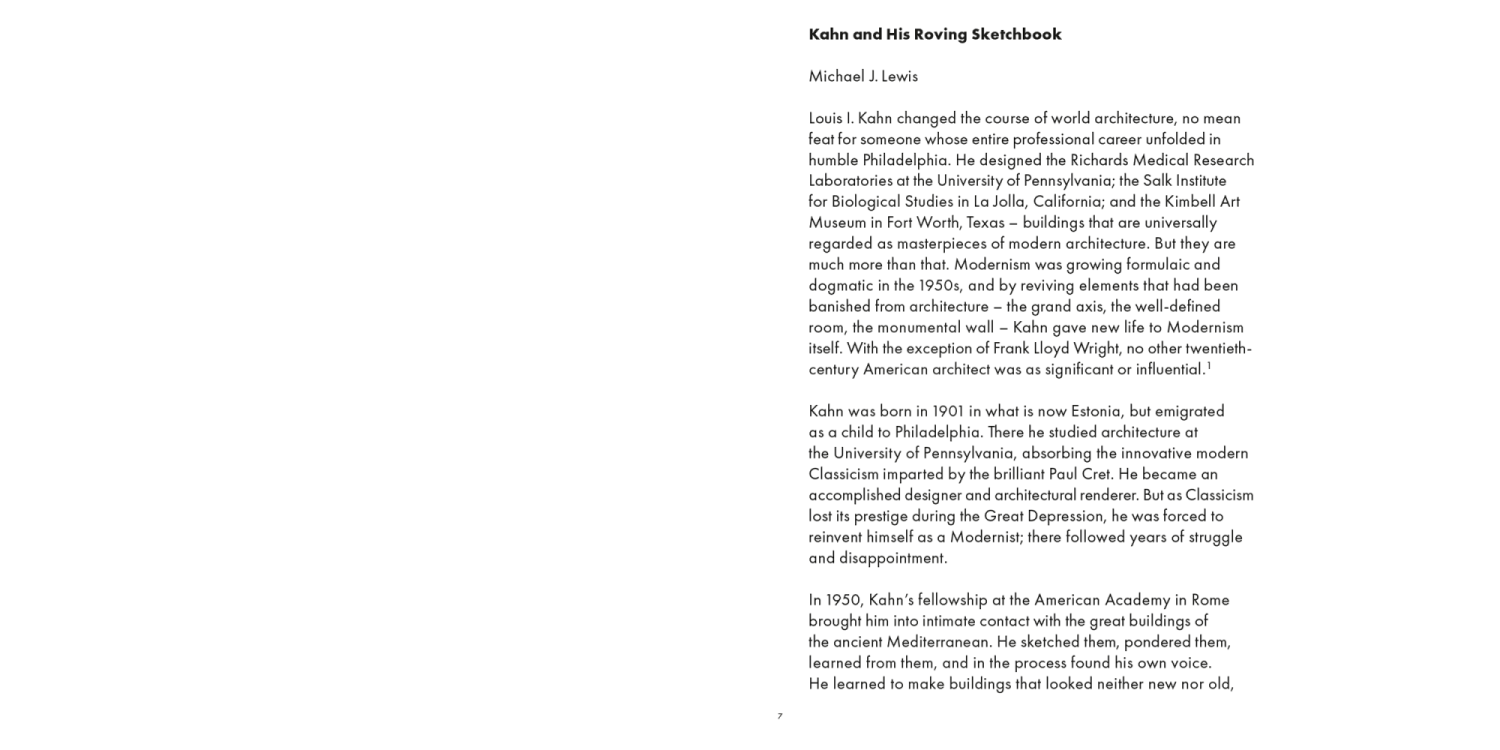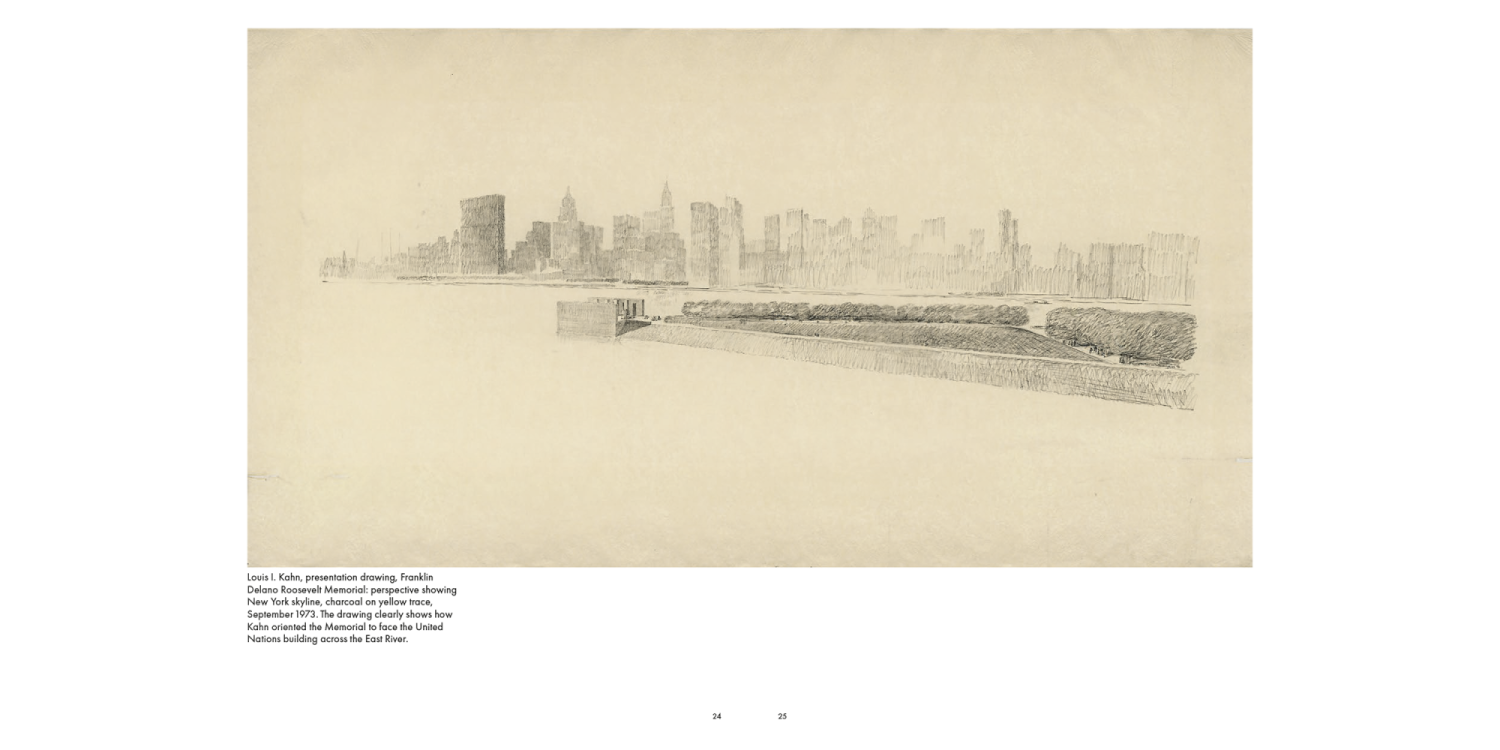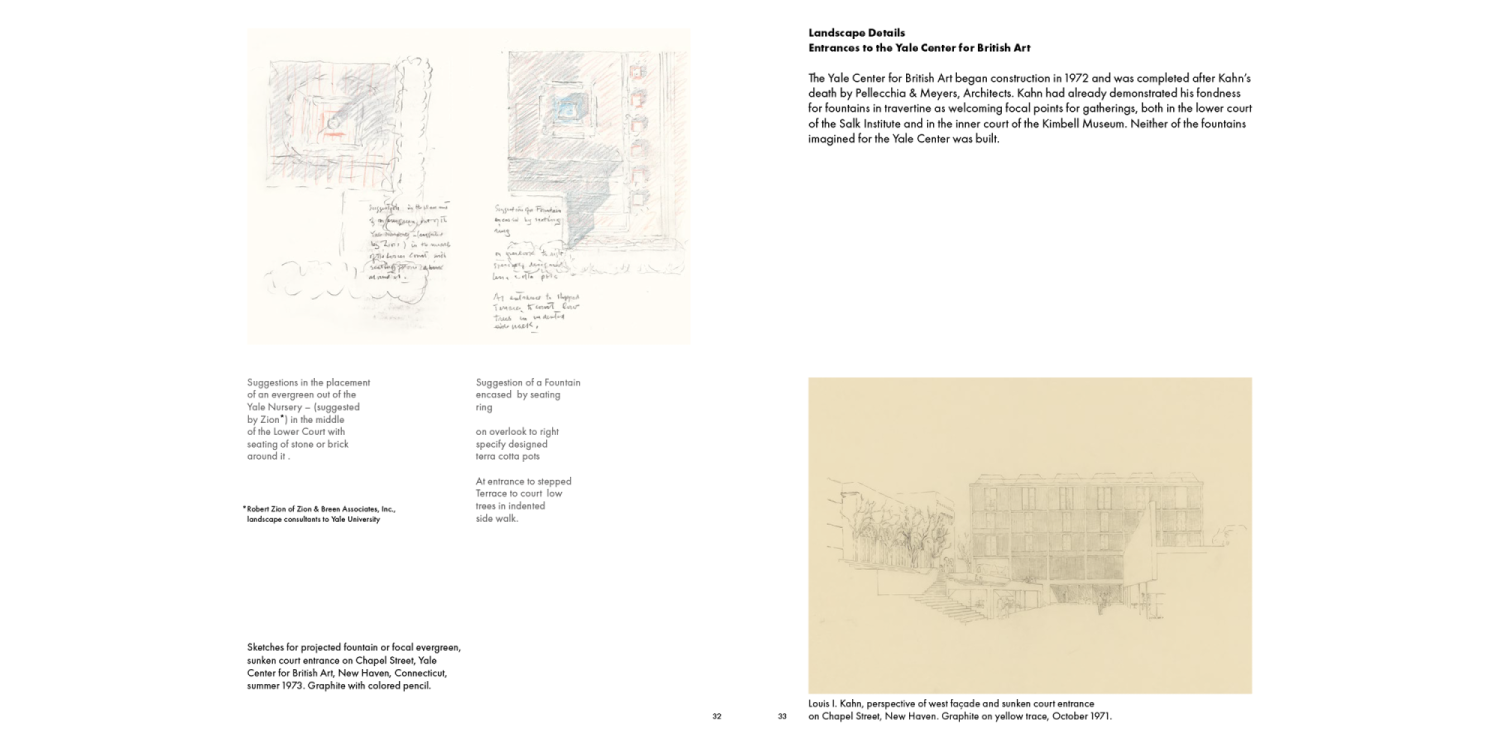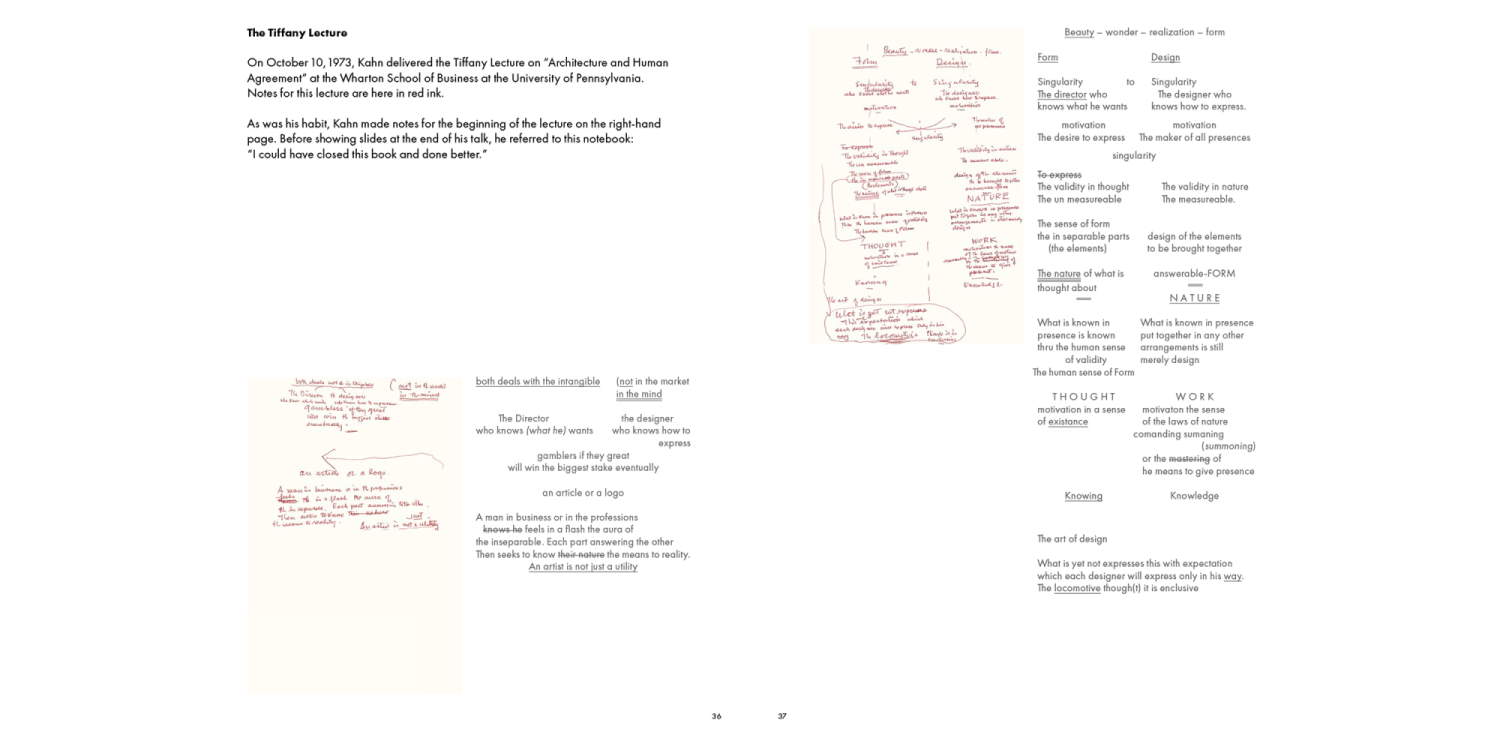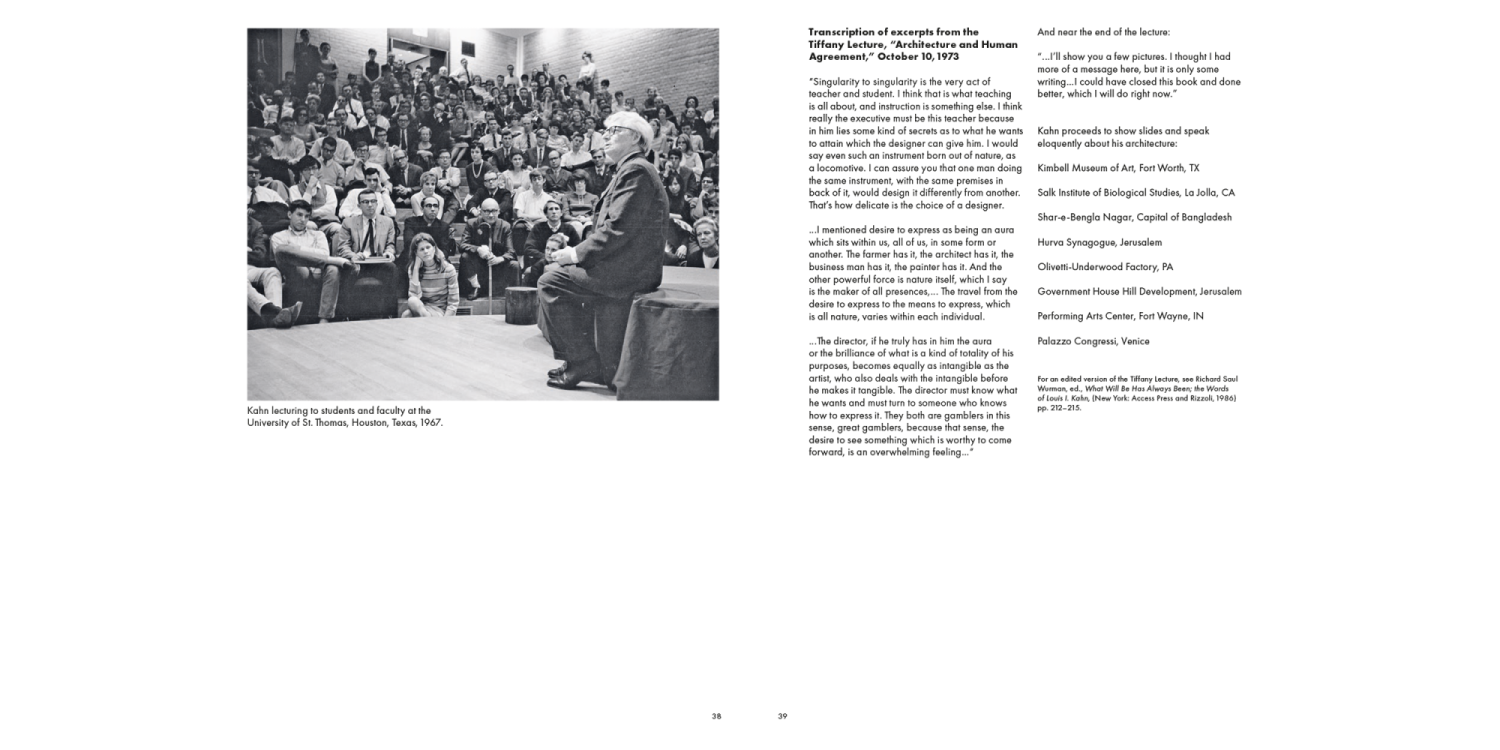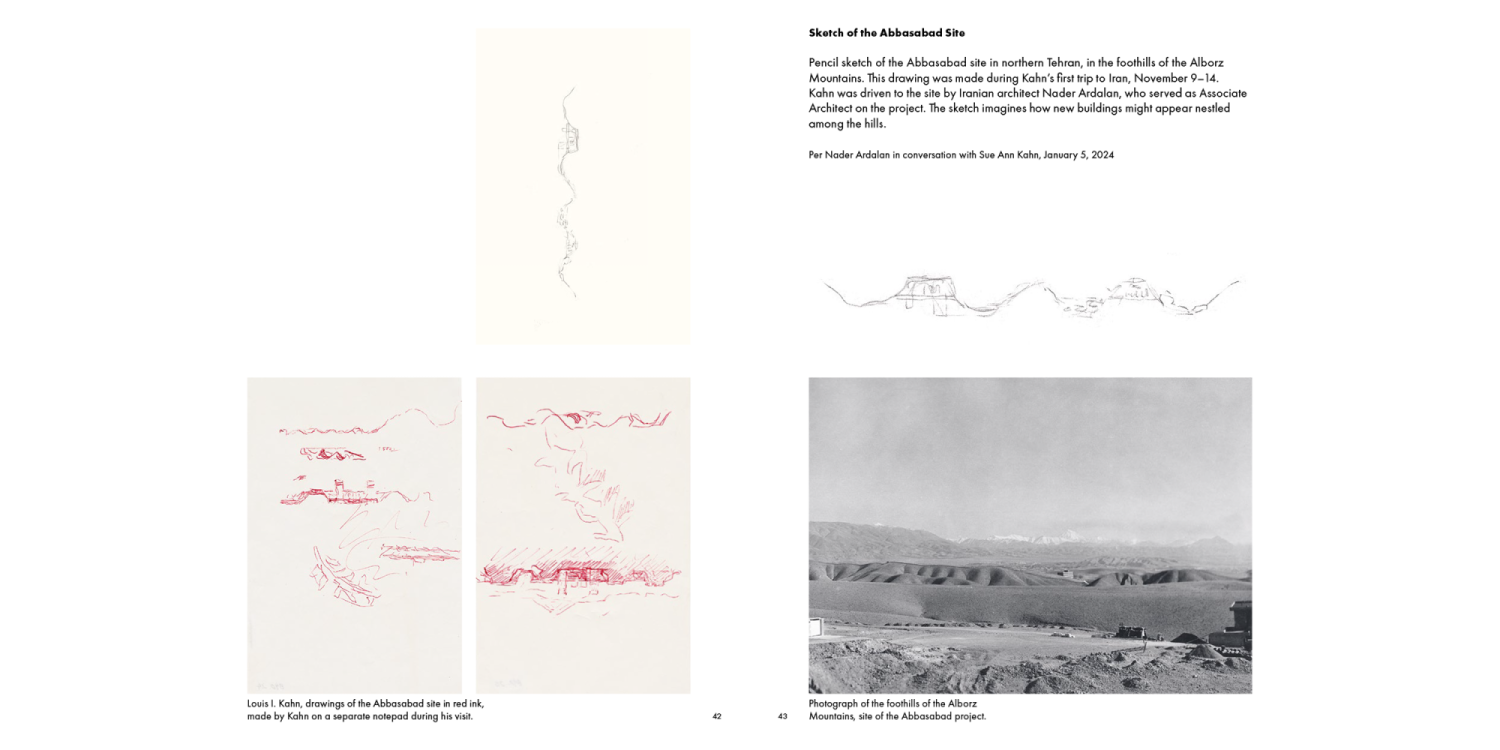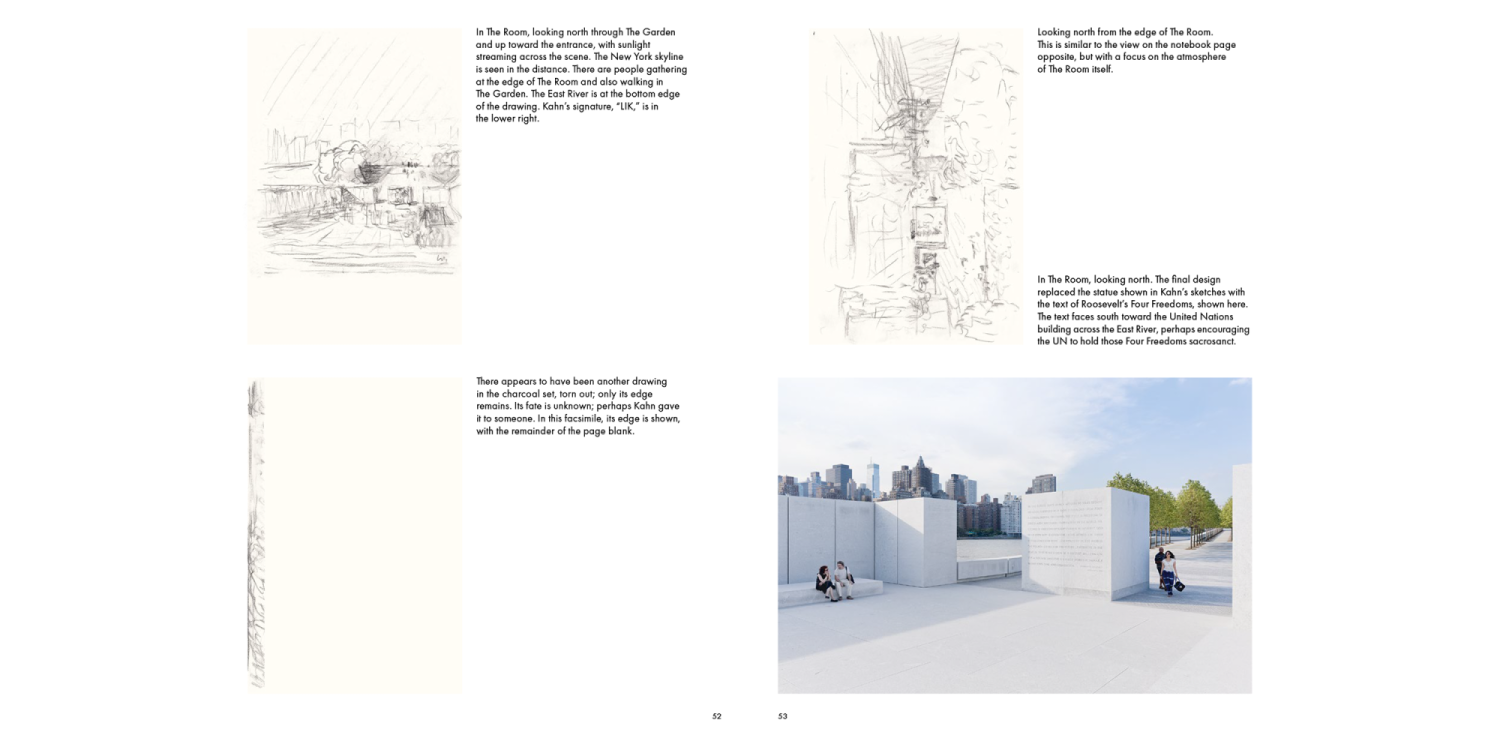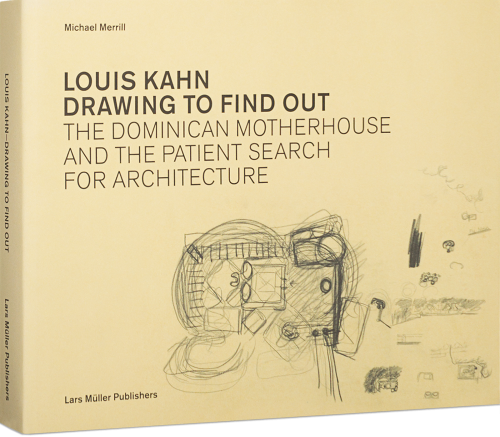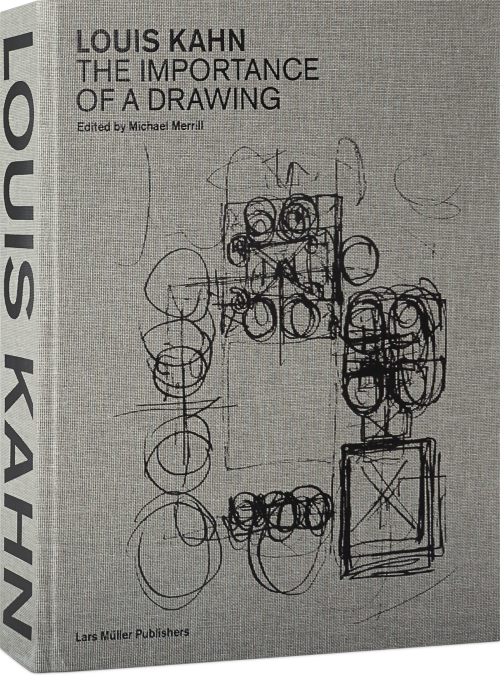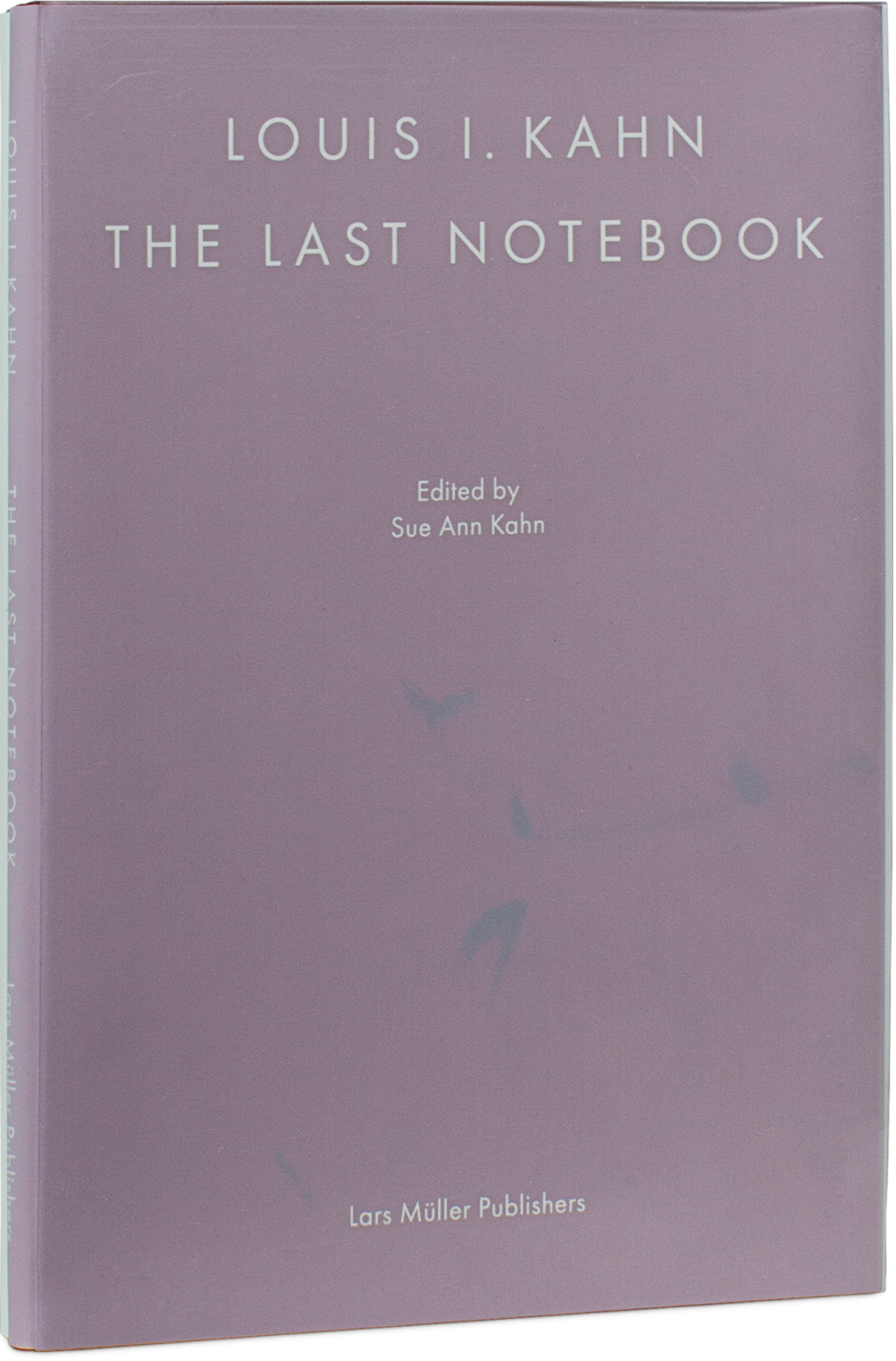
Louis I. Kahn: The Last Notebook
Honoring the fiftieth anniversary of the death of Louis Kahn in March 1974, this facsimile edition exquisitely reproduces the notebook in which the renowned American architect sketched and wrote during his travels in the last year of his life.
Anchored by a magnificent set of drawings illustrating the final design of the Franklin D. Roosevelt Four Freedoms Park in New York City (1973/74, posthumously completed in 2012), "Louis I. Kahn: The Last Notebook" provides an intimate glimpse into the architect’s mind and design process. These private sketches and poetic reflections reveal Kahn’s spiritual understanding of architecture as inclusive of our total environment and shed new light on the architect’s influential philosophy for designing, building and conceiving architecture.
The facsimile pays close attention to the material qualities of the original notebook, replicating its delicate, transparent paper. Made widely available for the first time, the publication includes transcriptions of Kahn’s handwriting by Sue Ann Kahn and a commentary by architectural critic and historian Michael J. Lewis.
Continuing on from earlier investigations into the importance of drawing in the iconic architect’s work at Lars Müller Publishers, "Louis I. Kahn: The Last Notebook" replicates sketching in its most raw, pure form.
Honoring the fiftieth anniversary of the death of Louis Kahn in March 1974, this facsimile edition exquisitely reproduces the notebook in which the renowned American architect sketched and wrote during his travels in the last year of his life.
Anchored by a magnificent set of drawings illustrating the final design of the Franklin D. Roosevelt Four Freedoms Park in New York City (1973/74, posthumously completed in 2012), "Louis I. Kahn: The Last Notebook" provides an intimate glimpse into the architect’s mind and design process. These private sketches and poetic reflections reveal Kahn’s spiritual understanding of architecture as inclusive of our total environment and shed new light on the architect’s influential philosophy for designing, building and conceiving architecture.
The facsimile pays close attention to the material qualities of the original notebook, replicating its delicate, transparent paper. Made widely available for the first time, the publication includes transcriptions of Kahn’s handwriting by Sue Ann Kahn and a commentary by architectural critic and historian Michael J. Lewis.
Continuing on from earlier investigations into the importance of drawing in the iconic architect’s work at Lars Müller Publishers, "Louis I. Kahn: The Last Notebook" replicates sketching in its most raw, pure form.
“It took her more than 15 years years to find a publisher; Sue Ann and the Swiss-based publishers Lars Müller completed it in time for the 50th anniversary of Kahn's death, this March. The result “Louis I. Kahn: The Last Notebook,” is a remarkable creation.”
– The New York Times
“When the brilliant 500-page book “Louis Kahn: The Importance of a Drawing” by Michael Merrill was published three years ago, it was thought that everything there was to say about the great architect and passionate draughtsman was already on the table. But now, Lars Müller Publishers has gone further.”
– Bau Netz
“I’m hoping it will just show another side of my father, a very human side [...] and start a new conversation about his legacy and his work.”
– Sue Ann Kahn, Monocle on Design
“Kahn's daughter Sue Ann has found the right moment to publish this gem. The facsimile notebook is accompanied by a volume of text in the same format, which explains the connection of the sketches, comments and thoughts. [...] This publication is highly recommended to anyone interested in a unique analog experience.”
– Alessando Vassella, Bauwelt
